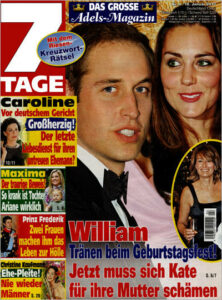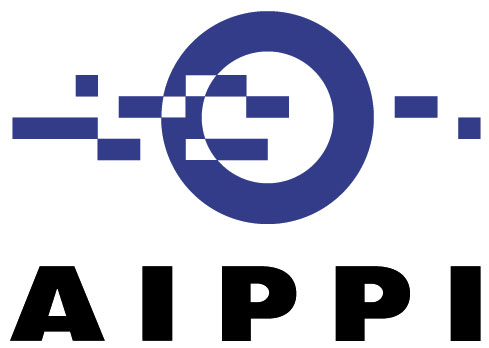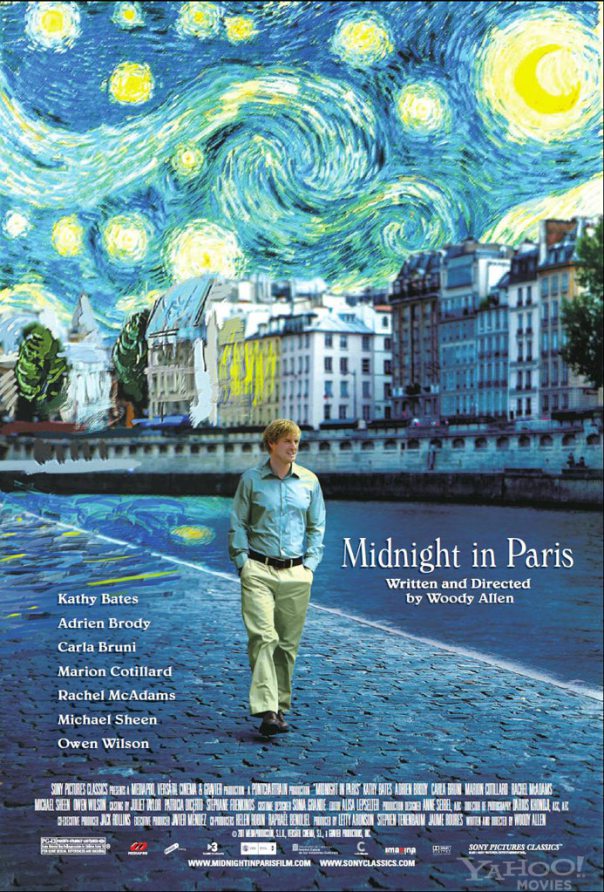Paul Keller, Kennisland, over de verhouding tussen Creative Commons en modernisering van het auteursrecht, Buenos Aires @ Global Summit van Creative Commons.
 Citaatselectie: "We need to make sure that the success of Creative Commons is not (mis)used by those pushing for more restrictive copyright laws or who are trying to defend the status quo. I am increasingly hearing the argument that copyright does not need to be made more flexible because Creative Commons already allows flexibility within the existing system.
Citaatselectie: "We need to make sure that the success of Creative Commons is not (mis)used by those pushing for more restrictive copyright laws or who are trying to defend the status quo. I am increasingly hearing the argument that copyright does not need to be made more flexible because Creative Commons already allows flexibility within the existing system.
This argument is quite new for many of us (we are still used to be accused of undermining copyrights), but as the position of rights holders in discussions about copyright moves from ‘we need more copyright protections’ to ‘we acknowledge that the current status quo is not perfect, but that does not mean that we need to reform copyright legislation, this means that we need to become better at licensing’ we increasingly see our opponents pointing to Creative Commons as a proof that you can have flexibility within the existing system."
Gehele introductie: Let me give you a little bit of background where we are coming from with regards to this discussion about the relationship between Creative Commons and Copyright Reform. If you want, this discussion is a follow up of a discussion that surfaced during last year's Global Congress on Intellectual Property and the Public Interest in Rio de Janeiro.
People from Creative Commons affiliate teams formed the biggest contingent of participants from a single community there, yet we did not have a position on what we were doing there as Creative Commons.
It is obvious that lots of people involved in Creative Commons are also involved in copyright reform activities, but until now we have mostly attempted to keep these two activities separated. Personally, I cannot count how often I have prefaced contributions to discussions by stating that "I am not making this point with my CC hat on".
After the 10th anniversary of the Creative Commons movement we feel that the time has come to rethink this separation as well as the notion that Creative Commons, as a steward of the CC licenses, needs to be neutral when it comes to copyright reform efforts that are going on around the world. This is even more important as we currently see a lot of opportunities to push for meaningful of reform copyright:
These reform efforts are often linked to making copyright fit for the digital age and, let's face it, the creative commons community brings together an impressive group of people with a deep understanding of how copyright works or ought to work in the digital environment. This is why so many of us involved are working towards copyright reform (in the sense that we want to strengthen access to knowledge and culture and the public domain). Ultimately, this is also why we need to review the relationship between what we are doing as Creative Commons and how we contribute to reforming copyright legislation.
I think - and this is something that is shared among all the organisers of today’s event - that we have two main incentives for clarifying this relationship: a defensive one and a offensive one.
Let me start with the defensive reason for pursuing this:
We need to make sure that the success of Creative Commons is not (mis)used by those pushing for more restrictive copyright laws or who are trying to defend the status quo. I am increasingly hearing the argument that copyright does not need to be made more flexible because Creative Commons already allows flexibility within the existing system.
This argument is quite new for many of us (we are still used to be accused of undermining copyrights), but as the position of rights holders in discussions about copyright moves from ‘we need more copyright protections’ to ‘we acknowledge that the current status quo is not perfect, but that does not mean that we need to reform copyright legislation, this means that we need to become better at licensing’ we increasingly see our opponents pointing to Creative Commons as a proof that you can have flexibility within the existing system.
Given this, we will need to prevent that our opponents use the success of Creative Commons as an argument for advancing their positions which are often the opposite of what we strive for and why we are active within Creative Commons. As long as Creative Commons does not clearly positions itself with regards to legislative reform efforts this will be very difficult to achieve. We really need Creative Commons to make very clear that it supports efforts to strengthen user rights through legislative reform efforts.
Now onto the offensive reason for clarifying the relationship with copyright reform activities:
For a while one of the principal beliefs of Creative Commons was (and maybe still is) that we cannot be normative in the sense that we can tell creators how they should license their rights works. The argument goes that we simply offer creators tools to exercise their rights in a particular way. If and how these creators use our tools is up to them.
This was usually followed by the qualification that there are a few areas where we do have a normative position in favour of using free licenses. Areas like education and science or, more generally, those areas of creative production that are based on public funding. Where does this idea that we can be normative in these fields come from? Most likely from a deep ingrained belief that for society to function we need a vibrant and meaningful public domain. We have developed the CC licenses as tools to strengthen the public domain and in many areas (Open Educational Resources, Open Access to Scientific Research, Open Government and increasingly Open Cultural Heritage) and they are an important instrument to ensure support the public domain.
Now there are also areas where Creative Commons licenses do not work so well in defending a vibrant and meaningful public domain. Take the WIPO treaty for the visually impaired: There had to be a treaty because a voluntary or market driven solution to end the book famine for visually impaired people in the developing world did not emerge even though the problem had been known for a long time. Quite clearly the problem cannot not be solved by encouraging publishers to license their works openly and, instead, it required a tailored legislative approach that builds on new limitation and exemptions that address this specific issue.
There are many more issues that are very similar: Yes, if all popular artists used Creative Commons licenses for their creative output, there would probably be a lot less discussion about the legal status of noncommercial transformative reuse (also known by the hideous term User Generated Content), but it is not very likely that this will happen all of a sudden. This is why in the Netherlands, next to our work as Creative Commons Netherlands, we are also advocating for a reform of the quotation exception in our copyright code that would ensure that the public has a right to make remixes.
Now obviously, a right to remix is something that Creative Commons (and it’s founders) have been championing for as long as I can remember, and I think that it is time that we, as the Creative Commons community, take a position in support of legislative efforts to strengthen user rights in the digital environment. In the end, promoting the use of our licenses and fighting for legislative reform are two sides of the same coin: The desire to maintain a vibrant and meaningful public domain in the digital age.
 Ingezonden door Wouter Pors, Bird & Bird gericht aan het Prepatory Committee van het Unified Patent Court: On behalf of Bird & Bird LLP we hereby submit our comments on the Draft Rules of Procedure for the Unified Patent Court as published on the website on 31 May 2013. This submission was prepared by the International UPC Steering Group of Bird & Bird, which comprises patent litigators and patent attorneysin the various countries in which we practise. We have also been involved in the preparation of the submissions of AIPPI and EPLAW and have taken these submissions into account. We have further also taken the epi submission into account. This submission represents our independent professional view of the Rules of Procedure and is made to support the further improvement of the envisaged system.
Ingezonden door Wouter Pors, Bird & Bird gericht aan het Prepatory Committee van het Unified Patent Court: On behalf of Bird & Bird LLP we hereby submit our comments on the Draft Rules of Procedure for the Unified Patent Court as published on the website on 31 May 2013. This submission was prepared by the International UPC Steering Group of Bird & Bird, which comprises patent litigators and patent attorneysin the various countries in which we practise. We have also been involved in the preparation of the submissions of AIPPI and EPLAW and have taken these submissions into account. We have further also taken the epi submission into account. This submission represents our independent professional view of the Rules of Procedure and is made to support the further improvement of the envisaged system. Een bijdrage van Bas Kist,
Een bijdrage van Bas Kist,  Redactionele bijdrage van Jens van den Brink,
Redactionele bijdrage van Jens van den Brink,  Bijdrage ingezonden door Bas Kist,
Bijdrage ingezonden door Bas Kist,  Octrooien, bekende merken, duur van het auteursrecht, schadevergoeding, plain packaging, Unified Patent Court.
Octrooien, bekende merken, duur van het auteursrecht, schadevergoeding, plain packaging, Unified Patent Court. Kennisland
Kennisland

 Een bijdrage van Peter van Gemert en Wouter Pors,
Een bijdrage van Peter van Gemert en Wouter Pors,  Een redactionele bijdrage van Thijs van den Heuvel,
Een redactionele bijdrage van Thijs van den Heuvel, 





















